Good morning all of my friends in Blurt. I hope we are all healthy always and can carry out activities as usual. On this occasion I want to write a little about the paper Wasps Ropalidia fasciata from the Vespidae family that I managed to capture with my cellphone camera. When I tried to shoot, they were a bit aggressive. My mother reminded me to be careful because this wasp has a painful sting. Thankfully I finally managed to take some pictures of the Wasp from different angles. I hope you all like this picture of mine.
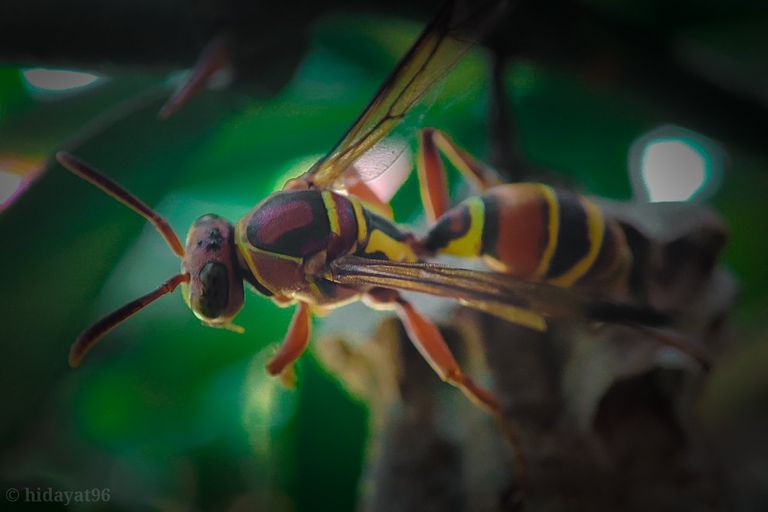
Wasps are insects that belong to the order Hymenoptera like bees and ants. There are currently about 75,000 wasp species that have been identified. Interestingly, most of these animals live as parasites by laying their eggs on the bodies of other animals. The distribution of wasps is very wide and can be found in all parts of the world, except for areas with extreme climates.
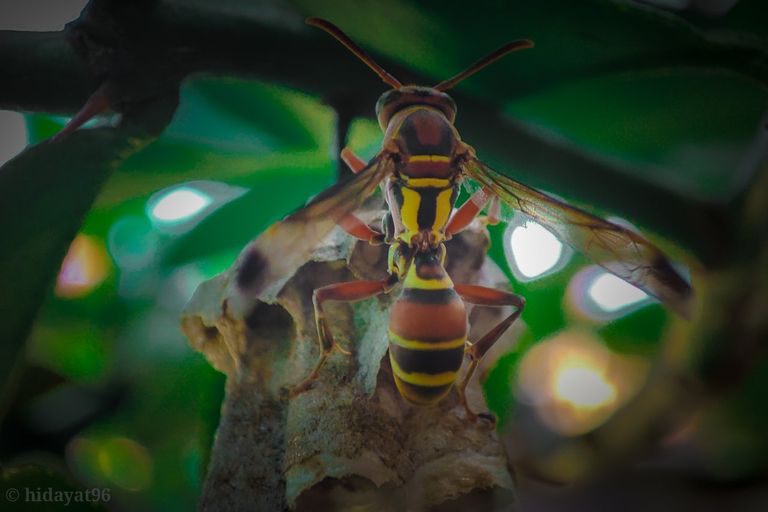
Wasps have bodies that are easily recognizable compared to other insect classes. The wasp body is divided into three main parts, namely the head, thorax, and abdomen. As one of the hymenoptera insects, the wasp has a main characteristic in the form of a slim waist that connects the chest and abdomen. That way, the wasp's body is able to bend easily and perfectly.
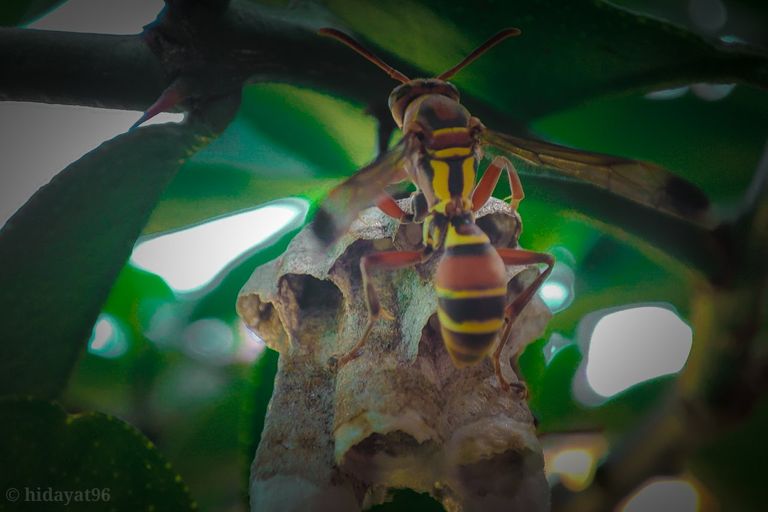
On the head of the wasp there is a pair of compound eyes consisting of a collection of small eye lenses. In addition to this pair of compound eyes, wasps also have three ocelli. These eyes are simple eyes that are on the top of the wasp's head. Ocellus is not used by wasps to see but detects the intensity of light in the surroundings. This way, the wasp can know when to start and end its activity.
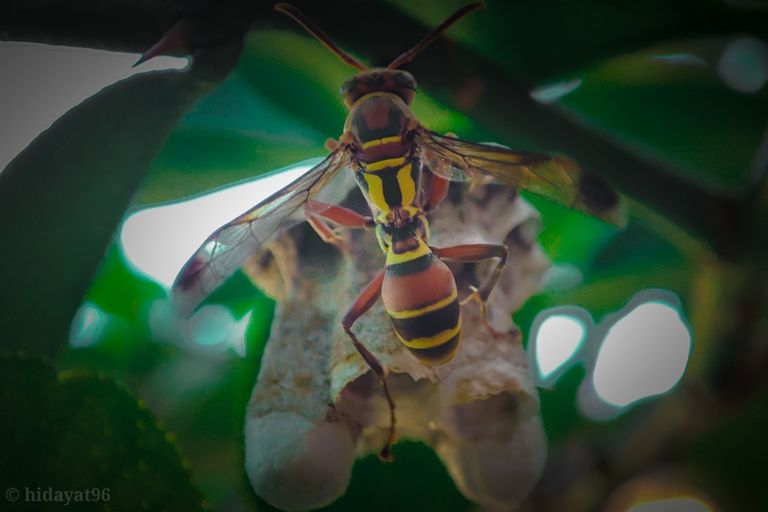
In addition, wasps have a pair of lower jaws or mandibles that are often used in various activities, such as pulling wood fibers, clamping objects, or killing other insects. On the other side of the head there is also a pair of antennae with the function of detecting various types of chemical stimuli.
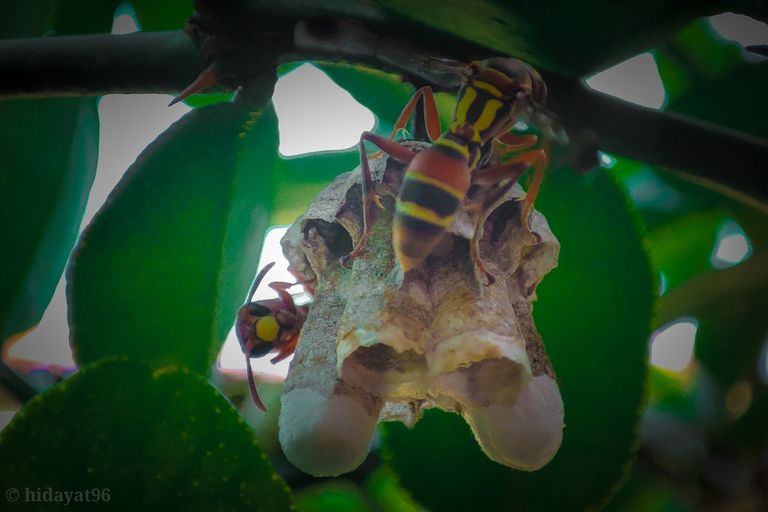
Wasps which are also known as members of this Arthropoda do not have an internal skeleton. But the whole body is covered by an outer shell called an exoskeleton. The color of this outer shell varies, for example wasps from the family Vespidae have a striking yellow and black body so that other animals don't bother them if they don't want to be stung.
In addition, the wasp's body is barely covered with any hair. This is the opposite of a bee that actually grows thick hair all over its body. Almost all types of wasps have two pairs of transparent colored wings and move in rhythm. Wasps are considered very good flying animals, so don't be surprised if wasps are also considered as insects that are able to perform various kinds of maneuvers, such as spinning, flying at high speed, to flying backwards.

Wasp Way of Life
Based on their way of life, wasps are divided into two types, namely solitary wasps and social wasps. Solitary wasps are wasps that live alone most of their lives, while social wasps tend to live together in large groups.
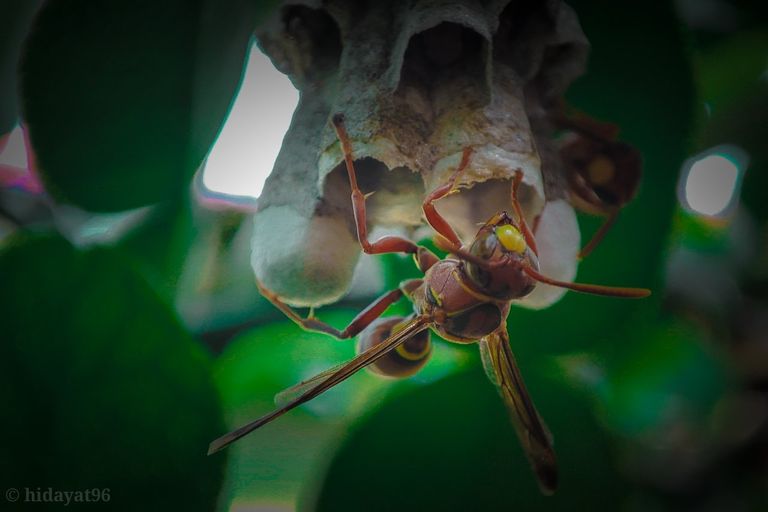
As I have mentioned above, Solitary wasps are wasps that choose to live alone throughout their lives. The majority, these solitary wasps are known as parasitic wasps. Solitary wasps often lay their eggs on the bodies of other insects, so the wasp larvae live by eating the flesh of their hosts.
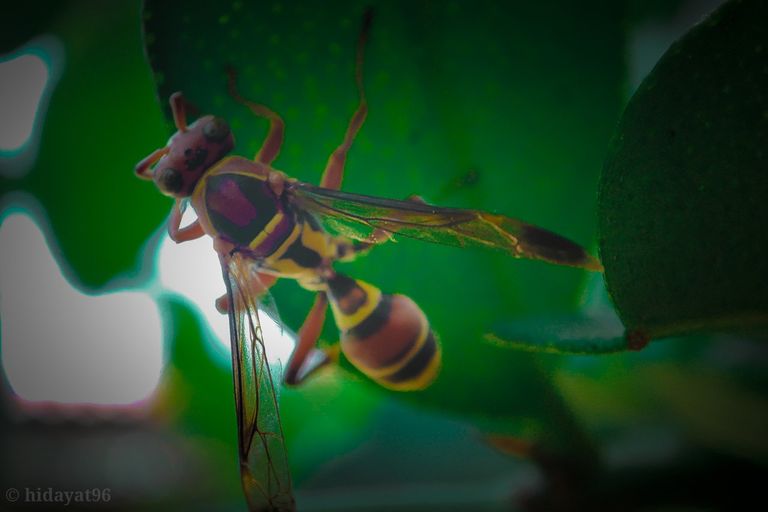
Meanwhile, there are also solitary wasps that prefer to hunt other animals such as spiders and caterpillars to feed the larvae. When hunting, solitary wasps paralyze their prey with a venom-containing stinger. Then, the wasps will insert their victims into earthen burrows or nests from the mud they have made. Eggs that are ready to hatch are placed not far from the victim who has been successfully paralyzed so that the newly hatched larvae already have their food supply.
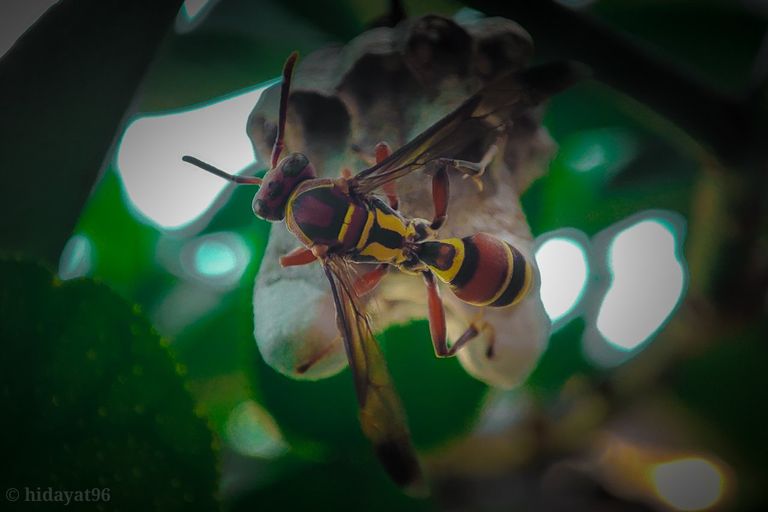
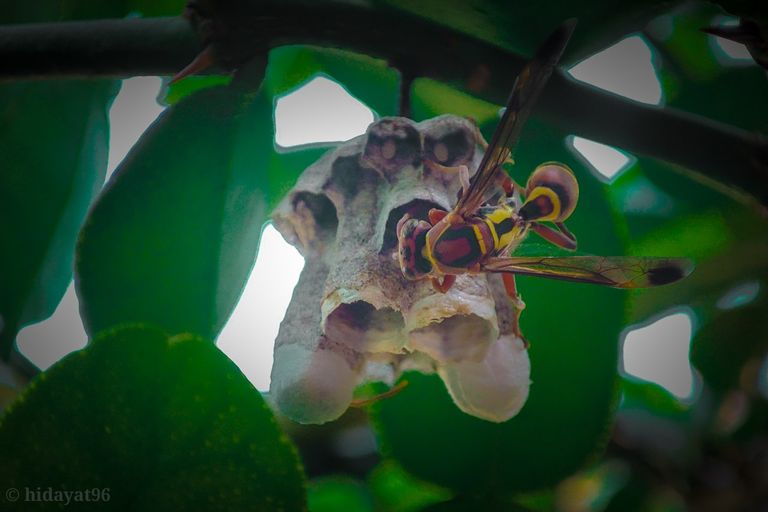
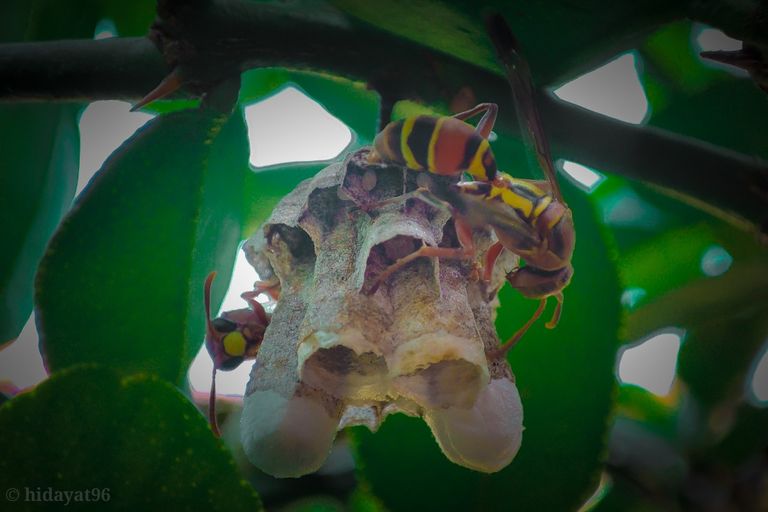
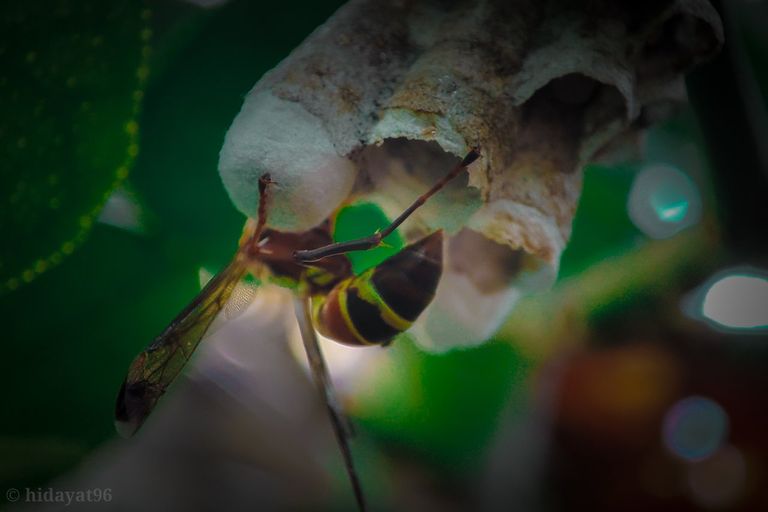
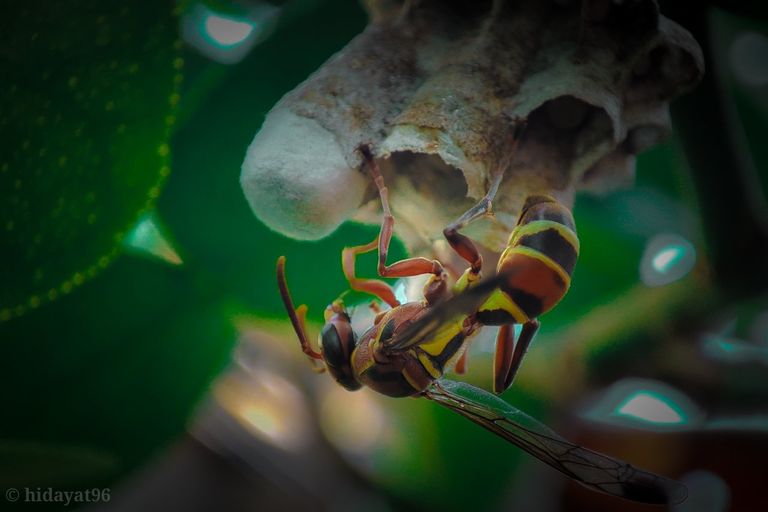
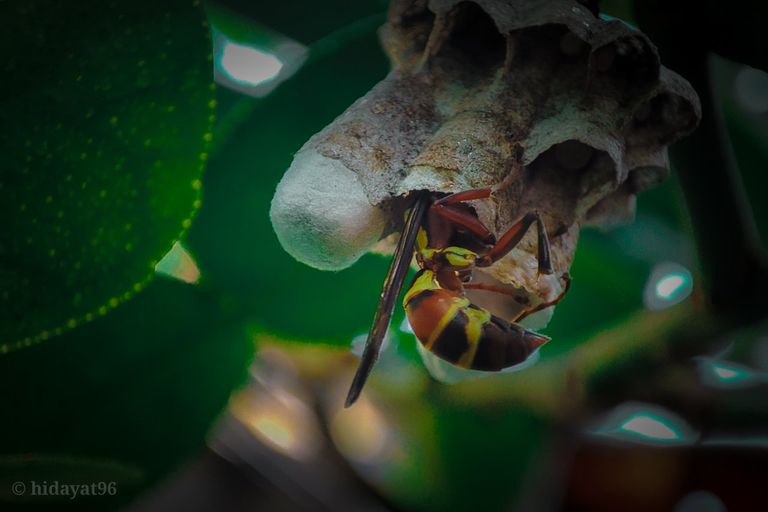
| Camera | Smartphone Redmi Note 10 pro |
|---|---|
| Lens | Macro Mobile lens |
| ISO | Automatic |
| Photographer | @hidayat96 |
See you again in my next post with a different photography object. Hopefully this can be a memory for myself and for other friends.
Amazing write up @hidayat96.